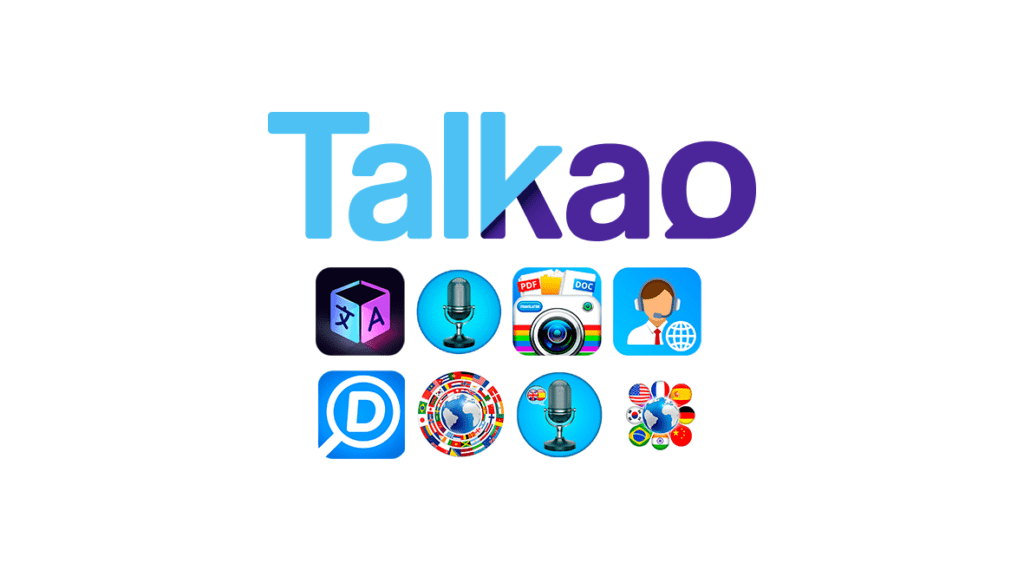
As an AI enthusiast, I have always been fascinated by the power of computers with AI. The ability of machines to learn, adapt and perform complex tasks has revolutionized many industries, from healthcare to finance, education, and entertainment. But what is the future of AI, and how will it impact our world? In this article, I will explore the history, current state, and potential applications of AI, with a focus on Microsoft’s supercomputer and its collaboration with the MET Office to build a new generation of weather forecasting models.
Introduction to AI and Supercomputers
Artificial intelligence (AI) is a branch of computer science that deals with the development of algorithms and systems that can perform tasks requiring human-like intelligence, such as perception, reasoning, learning, and decision making. AI has been around for decades, but recent advancements in machine learning, deep learning, and natural language processing have opened up new possibilities for automation, optimization, and innovation.
A supercomputer is a type of computer that has many processors, memory, and storage resources, allowing it to perform complex calculations and data analysis tasks at a much higher speed and scale than regular computers. Supercomputers are used in various fields, such as science, engineering, finance, and defense, to simulate and model complex phenomena, solve optimization problems, and process large amounts of data.
The History of Computers with AI
The history of AI can be traced back to the mid-20th century, when researchers started exploring the idea of creating machines that could reason and learn like humans. One of the first AI systems was the Logic Theorist, developed by Allen Newell and Herbert Simon in 1956, which could prove mathematical theorems using symbolic logic. Another milestone was the General Problem Solver, created by J. C. Shaw and Herbert Simon in 1957, which could solve various problems using heuristic search and rule-based reasoning.
In the 1960s and 1970s, AI research focused on expert systems, which were designed to mimic the knowledge and reasoning of human experts in specific domains, such as medicine, law, and finance. One of the most famous expert systems was MYCIN, developed by Edward Shortliffe in 1974, which could diagnose bacterial infections and recommend treatments based on the patient’s symptoms and medical history.
In the following decades, AI research shifted towards machine learning, which involves training algorithms on large datasets to recognize patterns, classify objects, and make predictions. This approach has led to breakthroughs in computer vision, natural language processing, and speech recognition, enabling machines to perform tasks that were once thought to be exclusively human.
The Current State of AI and its Impact on Society
Today, AI is everywhere, from voice assistants like Siri and Alexa to self-driving cars, personalized advertising, and fraud detection. AI is also transforming industries such as healthcare, where it is used to diagnose diseases, develop new drugs, and improve patient outcomes. In finance, AI is used for fraud detection, risk management, and algorithmic trading. In education, AI is used for personalized learning, adaptive assessment, and intelligent tutoring.
However, AI is not without its challenges and limitations. One of the main challenges is the bias and discrimination that can be introduced by AI systems, which are trained on biased data and can perpetuate and amplify existing inequalities. Another challenge is the ethical and legal implications of AI, such as privacy, transparency, and accountability. As AI becomes more pervasive and powerful, it is important to ensure that it is developed and used in a responsible and ethical way.
What is a Supercomputer and How does it Differ from a Regular Computer?
A supercomputer is a specialized type of computer that is designed to perform large-scale computations and simulations, are typically used for scientific and engineering applications that require high performance and accuracy, such as climate modeling, astrophysics, and quantum mechanics. Supercomputers are also used for data-intensive tasks such as big data analytics, machine learning, and artificial intelligence.
Supercomputers differ from regular computers in several ways. First, supercomputers have a much higher processing power, measured in floating-point operations per second (FLOPS), than regular computers.
Supercomputers can perform billions or even trillions of calculations per second, whereas regular computers can only perform millions. Second, supercomputers have a larger memory and storage capacity, allowing them to process and store massive datasets. Third, supercomputers are often specialized for specific tasks, such as weather forecasting or genome sequencing, whereas regular computers are general-purpose and can perform various tasks.
Microsoft’s Announcement to Build a Supercomputer for AI
In May 2020, Microsoft announced that it would build a new supercomputer for AI research, in collaboration with OpenAI, a leading AI research organization. The supercomputer, named Azure AI, is one of the top five most powerful supercomputers in the world, with a processing power of 285 petaflops, or 285 million billion calculations per second. Azure AI is designed to train and run large-scale AI models, such as natural language processing and computer vision, that require massive amounts of computing power and data.
The collaboration between Microsoft and OpenAI is aimed at advancing AI research and development, and addressing some of the key challenges and opportunities of AI, such as data privacy, energy efficiency, and ethical considerations. Azure AI is also expected to support various applications of AI, such as autonomous vehicles, personalized medicine, and smart cities.
The MET Office and Microsoft’s Collaboration to Build a Supercomputer for Weather Forecasting
In addition to the collaboration with OpenAI, Microsoft has also partnered with the MET Office, the UK’s national weather service, to build a new supercomputer for weather forecasting. The supercomputer, named the Cray XC50, is the most powerful weather and climate supercomputer in the world, with a processing power of 23.5 petaflops.
The Cray XC50 is designed to run sophisticated weather and climate models, that can predict the weather up to 15 days in advance, as well as simulate the impacts of climate change on different regions and sectors.
The collaboration between the MET Office and Microsoft is aimed at improving the accuracy and reliability of weather forecasts, and providing more detailed and timely information to the public and decision-makers.
The Cray XC50 is also expected to support research on climate change and its impacts, and help develop strategies and policies to mitigate and adapt to climate change.
The Potential Benefits and Applications of Microsoft’s Supercomputer
The potential benefits and applications of Microsoft’s supercomputer are numerous and diverse. Some of the key benefits include:
- Improved accuracy and speed of AI models, which can lead to better decision-making, efficiency, and innovation in various industries, such as healthcare, finance, and manufacturing.
- Faster and more detailed weather and climate forecasts, which can help mitigate the impacts of extreme weather events and support adaptation and resilience measures.
- Enhanced research and development in AI, climate science, and other fields, which can lead to new discoveries, technologies, and solutions to global challenges.
Some of the key applications of Microsoft’s supercomputer include:
- Natural language processing and speech recognition, for applications such as chatbots, voice assistants, and language translation.
- Computer vision and image recognition, for applications such as autonomous vehicles, facial recognition, and quality control.
- Climate modeling and simulation, for applications such as climate prediction, risk assessment, and policy evaluation.
- Drug discovery and personalized medicine, for applications such as drug design, clinical trials, and precision medicine.
The Ethical Implications of AI and Supercomputers
As AI and supercomputers become more powerful and pervasive, it is important to consider their ethical and societal implications. Some of the key ethical issues include:
- Bias and discrimination, which can be introduced by AI systems that are trained on biased data and can perpetuate and amplify existing inequalities.
- Privacy and security, which can be compromised by AI systems that collect, process, and store personal data without consent or protection.
- Transparency and accountability, which can be challenging in AI systems that are opaque, complex, and difficult to audit or explain.
- Employment and labor impacts, which can be significant in industries that are automated or augmented by AI, and can lead to job displacement, skill gaps, and income inequality.
To address these ethical issues, it is important to develop and implement ethical frameworks, guidelines, and standards for AI and supercomputers, that take into account the diverse perspectives, values, and interests of stakeholders, such as users, developers, regulators, and civil society.
The Future of AI and Supercomputers
The future of AI and supercomputers is both exciting and challenging. On the one hand, AI and supercomputers have the potential to transform many aspects of our lives, from healthcare to climate change, and enable new forms of creativity, productivity, and well-being. On the other hand, AI and supercomputers also pose significant risks and uncertainties, such as job displacement, inequality, and unintended consequences.
To realize the full potential of AI and supercomputers, it is important to pursue a human-centered and responsible approach, that values human dignity, rights, and welfare, and addresses the ethical, legal, and social implications of AI and supercomputers. This approach requires collaboration and engagement among diverse stakeholders, such as governments, industry, academia, and civil society, and a commitment to transparency, accountability, and participation.
Conclusion and Final Thoughts
In conclusion, AI and supercomputers are powerful tools that can help us tackle some of the most pressing challenges of our time, from climate change to healthcare. Microsoft’s supercomputer, in collaboration with OpenAI and the MET Office, represents a significant step forward in AI research and development, and has the potential to unlock new opportunities and benefits for society.
However, it is important to recognize that AI and supercomputers also present significant ethical and societal challenges, that require careful consideration and action. By taking a human-centered and responsible approach to AI and supercomputers, we can harness their power for the greater good, and build a more inclusive, sustainable, and prosperous future.
REMEMBER !!!
You can download our available apps for translating and learning languages correctly available for free on googleplay and applestores.
Do not hesitate to visit our Talkao website and contact us with any questions or problems you may have, and of course, take a look at any of our blog articles.












Newsletter